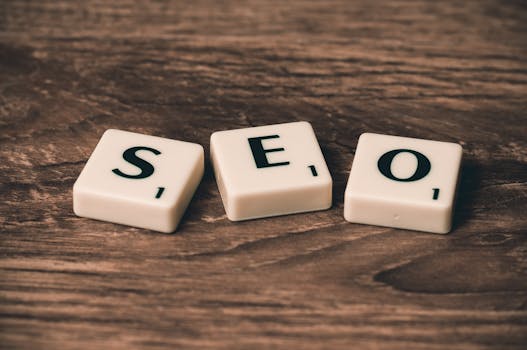Font Alt
Tools for Testing Font Performance
Font performance is a critical factor in web design and SEO. The right font can make your website visually appealing and improve readability, but it can also impact loading times and overall user experience. Testing font performance is an essential step that many overlook, yet I believe it can significantly enhance your site’s efficiency and user engagement.
One of my favorite tools is Google’s PageSpeed Insights. This tool not only analyzes the performance of your site but provides valuable insights on how fonts are affecting loading times. Identifying slow-loading fonts allows you to optimize them or even switch to more efficient alternatives that won’t bog down your page.
Another tool worth mentioning is WebPageTest. This tool gives a comprehensive view of your site’s performance, including font loading times at various connection speeds. It helps gauge how your website performs in real-world scenarios and can highlight fonts that need attention. Understanding how fonts load across different devices is crucial for mobile optimization.
Let’s not overlook Font Squirrel. Besides offering a wide range of fonts, it includes a web font generator that can help optimize specific fonts for faster loading without sacrificing quality. Being mindful of font file sizes can profoundly affect overall performance.
Lastly, I suggest checking out Typewolf Font Testing. This tool allows you to see how certain fonts perform in real-time, giving you a better feel for how they will look and fit within your site’s design. A visual preview combined with loading metrics can aid you in making better font choices.
Using these tools enables you to not only improve your site’s aesthetics but also supports your overall SEO strategy. By testing font performance, you can create a faster, more user-friendly website that pleases both users and search engines alike.
Web Safe Fonts vs. Custom Fonts: What You Need to Know
Choosing between web safe fonts and custom fonts can be a critical aspect of your website’s design. Web safe fonts are the tried and true options that are universally available across all devices and platforms. Fonts like Arial, Times New Roman, and Georgia are reliable choices, ensuring your text appears consistently for every visitor. This universality can simplify your design process significantly, as you won’t have to worry about how fonts render on different browsers or operating systems.
On the flip side, custom fonts open up a world of creative possibilities. With platforms like Google Fonts and Adobe Fonts, you can find unique typefaces that align perfectly with your brand identity. Custom fonts can elevate your design and make it stand out, but they come with their own challenges—such as load times and rendering issues. I’ve often noticed that while custom fonts enhance aesthetics, they can also slow down page speeds if not optimized properly.
Another key point to consider is SEO implications. Every extra HTTP request made by loading a custom font can impact your site’s loading speed, which is a significant ranking factor. Ensuring that your website remains fast is crucial for both user experience and search engine visibility. While custom fonts can add a premium feel to your site, they can also be detrimental if not handled appropriately.
Ultimately, the decision boils down to your website’s needs and goals. If you’re after consistency and speed, web safe fonts might be the route to take. However, if building a unique brand identity is your priority, don’t shy away from incorporating custom fonts—just ensure they don’t compromise your site’s performance.
Font Accessibility: Why It Matters in SEO
Font accessibility is a crucial factor in optimizing your website for search engines. Many often overlook how the typography of their web pages can significantly impact user experience and, consequently, SEO rankings. If users struggle to read your content due to poor font choices or sizes, they’re likely to abandon your site quickly. This behavior sends negative signals to search engines, suggesting that your site may not offer valuable information.
Additionally, search engines prioritize user experience. If your font choices are not accessible to all users, including those with visual impairments, it reflects poorly on your website’s overall accessibility. Therefore, using web-safe fonts and maintaining good contrast can enhance readability, ensuring that your content is not only more engaging but also more accessible to a wider audience.
Moreover, accessible fonts can lead to longer session durations and lower bounce rates. These metrics are key indicators of quality that search engines consider when ranking sites. If your visitors find the text readable and the layout attractive, they will spend more time consuming your content, which is a signal that your site is worth promoting.
Utilizing responsive font sizes can also enhance the mobile experience. With more users accessing websites via mobile devices, ensuring that your font scales properly can improve both usability and retention. Optimizing for mobile accessibility directly contributes to your SEO success.
In light of these factors, I firmly believe that font accessibility should be at the forefront of any SEO strategy. Investing time and resources into choosing the right fonts can dramatically impact your site’s performance in search engine results. Ultimately, making your content accessible through thoughtful typography choices is an investment in both your users and your site’s visibility.
Understanding Font Alt: An Overview
Font Alt is a critical aspect of web design that significantly impacts user experience and SEO. Essentially, it refers to the alternative text associated with a font, often seen in the context of web accessibility and ensuring that all users can understand the content presented, irrespective of their abilities.
Many overlook the importance of Font Alt, assuming that font choices are merely aesthetic. However, the right font alt text provides context and meaning, supplementing the visual presentation of your text. This feature becomes particularly vital for screen readers, which rely on font alt to communicate the purpose of text to visually impaired users.
In the context of SEO, Font Alt indirectly enhances your website’s ranking. Search engines favor accessible content. When you incorporate effective Font Alt practices, you aren’t just improving usability; you’re also reinforcing your website’s credibility. Furthermore, integrating keywords into your Font Alt can serve as an additional layer of optimization, subtly increasing your page’s relevance in search results.
Moreover, it’s essential to use Font Alt judiciously. Excessive or irrelevant alt texts can dilute your SEO efforts and frustrate your users. Each alt text should be concise and informative, complementing the visual element it represents. Aim for clarity and simplicity in your descriptions, ensuring that even users with screen readers receive an accurate picture of the content.
Ultimately, adopting Font Alt is about making your content more accessible and enhancing user experience. By prioritizing accessibility and SEO-friendly practices like Font Alt, you’re taking a significant step towards building a more inclusive online space.
Oct 20, 2021 … Fira Sans comes with 18 different weights and styles, offering a lot of flexibility in the design of headlines. No alt text provided for this …
Sep 15, 2019 … … type fit all approach in it's rules and formatting whilst your application has to be tailored to every role. No alt text provided for this image.
Key attributes to consider when selecting fonts
Choosing the right font is crucial for optimizing your content’s readability and impact on your audience.
- Readability: The font should be easy to read on various devices. I’m a firm believer that if your readers struggle to decipher your text, you’ve missed the mark.
- Brand alignment: Your font must reflect your brand’s personality. It should resonate with your target audience and convey the right message about your identity.
- Style consistency: Consistency across headings, body text, and other elements creates a cohesive design. I can’t emphasize enough how jarring it is to encounter mismatched fonts within the same piece.
- Web-safe fonts: Opt for fonts that render well across different browsers. Trust me, investing time in choosing reliable web-safe fonts pays off by ensuring a uniform experience for every visitor.
- Loading speed: Fonts can impact your site’s loading time. I prioritize lightweight options because nobody wants to wait for a website to load due to heavy fonts.
- Accessibility: Fonts should cater to all users, including those with visual impairments. I advocate for clear, high-contrast choices that make content accessible to everyone.
Alternative (Alt) Text is an essential part of making content accessible. When adding images, charts, icons or other graphic elements, alt text should be …
Write helpful Alt Text to describe images | Digital Accessibility
Alternative text (also known as "alt text") provides a textual alternative for media items such as images, audio, and video, and for visually complex content …
Alternative text (alt text) for images and other media | Stanford Sites …
They may be used in different contexts, even within this Web site. ALT text – the concept of adding a screen reader friendly text alternative description of an …
The information on this page will help ensure your text and images are accessible to all users. Quick Links. Accessible Fonts · Color Contrast · Alt Text. How …
Making Design Elements Accessible – Accessibility Resources at …
Adding ALT text allows authors to include images, but still provide the content in an alternative text based format. See example below for what a screen reader …
People who are blind typically use screen readers or Braille devices that "read" the text on Web pages. When these devices encounter a non-text element that has …
All images must have an ALT tag and equivalent text that describes them. See how to make images in digital content or on the web accessible.
Accessible images: alternative text guidelines | ASU IT Accessibility
Oct 19, 2021 …Alternative text is a textual substitute for non-text content in web pages. This article is focused on images, but its principles also apply …
Implementing Font Alt for Better User Experience
Font selection plays a crucial role in user experience. I’ve seen countless websites overlook this, yet it can affect readability and engagement dramatically. Implementing font alternatives can truly enhance the user experience. When users encounter a font that is difficult to read or doesn’t display properly on their device, they are likely to bounce off your site quickly. The importance of fallbacks cannot be understated. Having multiple font options ensures consistency across various devices and browsers. This isn’t just a matter of aesthetics; it’s about keeping your audience engaged and improving usability. If your font doesn’t load as intended, having a reliable fallback can save the day. I can’t stress enough how much a seamless reading experience matters.
Another key point is performance. Heavy font files can slow down page load times, leading to another reason for users to leave. Implementing lighter alternatives can significantly boost your site’s speed. Users have little patience, and a slow-loading page can be a killer for engagement rates.
Additionally, pay attention to your target audience. Choosing a font that resonates with them can boost trust and relatability. Certain fonts convey different emotions. For instance, a whimsical font may suit a creative site, while a clean, sans-serif typeface may be preferred for a corporate environment.
Lastly, testing is essential. I always recommend using tools to analyze how your fonts perform across different devices and browsers. User feedback is invaluable; actively seek it out and make adjustments as necessary. Remember, optimizing user experience isn’t a one-time task. It’s an ongoing commitment to enhancing how users interact with your content.
How to Choose the Right Font for Your Brand
Choosing the right font for your brand is critical, and I can’t emphasize enough how much it impacts your overall identity. The right font will convey your brand personality, message, and values instantly. You need to consider your target audience and the emotions you want to evoke. A modern font may appeal to tech-savvy users, while a script font might resonate more with a romantic or artistic demographic.
If you want to establish credibility, go for strong serif fonts. Alternatively, if your aim is to come off as friendly and approachable, a rounded sans-serif might do the trick. Fonts can communicate authority, playfulness, luxury, and more with just a glance.
Consistency is another vital factor. Your font should align with other branding elements like your logo, colors, and visuals. Using the same typeface across your website, social media, and marketing materials builds brand recognition and trust. I suggest narrowing down your choices to two or three fonts. This gives you versatility while keeping your brand visually coherent.
Test your font choices on various devices and screen sizes. What looks great on a desktop might completely fall flat on mobile. Readability should be a priority; if your audience struggles to read your content, you’ll likely lose them.
Don’t forget to consider licensing. Some beautiful fonts can come with steep fees or restrictions that could limit how you use them. Choosing a font that is both visually appealing and budget-friendly is essential. Simple utilities like Google Fonts or Adobe Fonts provide a plethora of choices without breaking the bank.
Ultimately, the font you choose can elevate your brand’s voice. So take the time to experiment and see how different fonts reflect your brand identity.
The Importance of Font Optimization for SEO
Font optimization plays a crucial role in enhancing website performance and user experience, both of which are essential for SEO. A well-optimized font not only contributes to faster loading times but also affects how visitors interact with your content. If your site takes too long to load due to heavy or poorly optimized fonts, potential visitors are likely to leave, increasing your bounce rate.
A key factor to consider is the use of font formats. Standard formats like WOFF and WOFF2 are optimized for the web and offer better compression. Choosing the right format can lead to decreased loading times and improved user experience. Ultimately, this impacts your SEO ranking as search engines favor sites that load quickly and provide a smooth experience.
Another element to keep in mind is your font size and line height. Using legible font sizes ensures that content is readable on all devices. When users can easily read your content, they are more likely to engage with it, share it, and link back to it—essential elements for boosting your SEO.
Lastly, consider the use of web-safe fonts. These fonts render consistently across different browsers, ensuring that your content appears as intended for all users. When users see a design that looks professional and cohesive, they are more likely to trust your site, leading to increased brand loyalty and better SEO outcomes. By prioritizing font optimization, you’re making a smart move towards improving your website’s overall SEO health.
General Guidelines · Alt text should be short and to the point. · Alt text should communicate the same information as the visual content. · Alt text should …
Dec 23, 2010 … To locate guidance on alternate text for links, controls and form elements, see. Agency-specific informafion at the back of this document.
Social Security Administration Guide: Alternate text for images
(VO):Alternative text, also known as alt text, is descriptive text that conveys the meaning of an image in digital content. It's designed to make visual content …
Image Alt Text. $25 and 15 minutes. That's all it takes! Open an …
Common Mistakes to Avoid with Font Selection
Choosing the wrong font can severely impact your website’s usability and overall aesthetic. One major mistake is prioritizing style over readability. While a fancy font may look appealing, if it’s hard to read, users will quickly lose interest. Always prioritize fonts that enhance clarity, especially for body text.
Another pitfall is inconsistency. Using multiple font styles across your site creates a disjointed experience. Stick to a limited selection—two or three complementary fonts—ensuring they work well together. This approach not only enhances visual appeal but also maintains a cohesive brand identity.
Don’t overlook the importance of font size and spacing. Text that’s too small leads to frustration, while excessive spacing can make content appear scattered. Aim for a balance that allows easy scanning and digesting of information. Test different sizes on various devices, as mobile users require larger, more accessible text.
Ignoring the context is another serious error. A playful font may fit a children’s site but would be completely inappropriate for a corporate or legal website. Understand your target audience and select a typeface that aligns with your brand’s voice.
Finally, don’t forget about loading times. Some ornate fonts can slow down your site significantly. Performance matters, and a slow site drives visitors away. Choose web-safe fonts or those optimized for performance to maintain speed and efficiency.
Avoiding these mistakes sets a solid foundation for creating a user-friendly and visually appealing website. Selecting the right fonts isn’t an art; it’s a strategic decision that can impact user engagement and conversion rates significantly.
The Impact of Font Choice on Readability and Engagement
Font choice significantly influences readability and user engagement on any webpage. As I explore the nuances of typography, it’s evident that selecting the right font can make or break a user’s experience. Fonts that are too ornate can distract and confuse readers, while clear, sans-serif options can enhance comprehension.
Personally, I’ve found that using a clean, readable font such as Arial or Helvetica helps maintain the flow of reading. Readers are less likely to abandon your content if they can easily grasp the information presented. Complex font styles might seem appealing, but often they lead to frustration, particularly on digital devices where clarity is key.
Moreover, font weight and size play critical roles. A font that’s too small can deter users from engaging with your content, while excessively large text can become overwhelming. Strike that perfect balance, and you’ll see improved user interaction.
The psychological aspect of font choice is also worth noting. Certain fonts can evoke emotions; for example, a playful font might engage younger audiences, while a classic serif typeface can lend credibility to a professional blog. Understanding your audience is crucial when deciding on typography. It’s not just about making the text look good; it’s about ensuring it resonates with those who read it.
In the competitive space of SEO, where attention spans are short, every small detail matters. A well-chosen font not only enhances the readability of your content but directly contributes to greater engagement and interaction:
- Opt for legible typefaces that aid comprehension.
- Consider the mood and message to align your font choice with your content.
- Keep consistency across your blog to create a cohesive reading experience.
In summary, the impact of font choice on readability and engagement is profound, and it’s a critical aspect of design that shouldn’t be overlooked.
The Future of Fonts in SEO Strategies
Fonts are becoming a critical factor in the evolving landscape of SEO. The way text appears on a webpage can significantly influence visitor engagement and website usability. Google’s algorithms continually update to prioritize user experience, meaning that typography isn’t just about aesthetics anymore. In the near future, we will see an increasing emphasis on font accessibility, readability, and overall design.
If your website uses fonts that are hard to read on mobile devices, you’ll likely face higher bounce rates. Fonts that enhance readability can optimize dwell time and reduce bounce rates, indirectly boosting your SEO rankings. Furthermore, as voice search becomes more prevalent, the need for clear, concise on-screen text will rise.
Web accessibility standards are climbing in importance as well. Choosing the right font can make your content more accessible to people with disabilities. This commitment to inclusivity could earn you more favor with search engines prioritizing accessibility in their ranking algorithms.
A font’s loading speed can also impact SEO. If your custom font slows down your website, it may negate the benefits of having a sophisticated design. Lightweight fonts should therefore be a priority for optimizing load times.
Lastly, the trends toward more personalized content and design choices cannot be ignored. Fonts that reflect brand identity while still being user-friendly will become essential. Businesses that adapt to these trends will likely see a competitive advantage in search rankings.
Best Practices for Font Alt Implementation
Proper font alt implementation plays a crucial role in enhancing both accessibility and SEO. Many website owners overlook how fonts can affect user experience and search rankings. Here are some best practices I’ve found to optimize font alt attributes effectively.
First, always use descriptive alt text for fonts that convey meaning. If a particular font style is used to highlight a brand name or key term, include that in the alt text. This helps search engines understand the significance of the typography on your page.
Second, be mindful of redundancy. If an image or graphic visually represents text, don’t duplicate the text in the alt attribute unnecessarily. Instead, focus on describing the image’s purpose and content. This keeps alt text concise and relevant.
Implementing alt text for custom web fonts is another area where many fall short. Utilize CSS feature queries to add fallbacks that ensure text is selectable and readable by screen readers, rather than embedding text in images.
Another key point is to test your implementation. Use accessibility tools and browser developer tools to analyze how your alt text appears to users with disabilities. Make adjustments based on feedback or findings to improve clarity.
Finally, continually monitor your page performance through analytics. This can reveal if specific font choices affect user engagement or behavior negatively. Adapt your strategy based on these insights.
Incorporating these best practices for font alt implementation will strengthen your website’s accessibility and optimize its SEO potential. Remember, proper use of alt text contributes significantly to a site’s overall effectiveness.
Addressing browser compatibility issues with fonts
Understanding and resolving font compatibility issues across different browsers is essential for maintaining a consistent user experience on your website.
- Use web-safe fonts: Prioritize a selection of fonts widely supported across browsers to avoid display issues.
- Employ fallback fonts: Always specify alternative font options in your CSS. This ensures a smooth experience even if the primary font fails to load.
- Consider using font formats: Utilize formats like WOFF and WOFF2, which are designed for the web. They deliver better compression and compatibility.
- Leverage CSS font-display: Implementing this property helps control how fonts are displayed during loading, enhancing user experience.
- Test across browsers: Regularly check how your fonts render on various browsers and devices to catch and fix any discrepancies.
- Utilize a fallback color: In scenarios where fonts don’t load, setting a background color can make text readable, preventing a poor user experience.
- Monitor performance: Some fonts can slow down site loading. Keep an eye on performance metrics to ensure optimal speed.
Top 5 Fonts Recommended for SEO
Choosing the right fonts is essential for enhancing readability and user experience, both of which significantly impact SEO. Here are some top font recommendations that I firmly believe can elevate your website’s performance in search engine rankings.
- 1. Open Sans: Open Sans is my go-to font for any website. Its clean lines and modern feel ensure excellent readability, making it easier for users to engage with your content.
- 2. Roboto: Roboto combines a friendly, yet professional appearance. I appreciate how it provides seamless visibility across different devices, which is vital for reaching a wider audience.
- 3. Lato: Lato’s semi-rounded details make it visually appealing without sacrificing clarity. I find that it works wonders for body text and headers alike, keeping users hooked.
- 4. Arial: This classic font is a staple. I often recommend Arial for websites needing simplicity and universal compatibility. Its familiarity brings comfort to users, enhancing time spent on site.
- 5. Georgia: For a touch of elegance, Georgia never disappoints. I love how this serif font maintains readability even in longer texts, which can encourage users to read more of your content.
What is Font Alt and why is it important?
Font alt is an essential HTML attribute that serves as a fallback for web fonts. When a custom font fails to load or if a user’s device does not support it, the font alt specification provides a substitution, ensuring your text remains legible and retains its intended design. This aspect is crucial for maintaining the aesthetic integrity and user experience of a website. If viewers encounter a garbled or default font instead of your carefully selected style, it can drastically impact their perception of your brand.
The importance of font alt extends beyond aesthetics; it plays a significant role in SEO as well. Search engines appreciate well-structured and user-friendly websites. By using appropriate font alt tags, you enhance your site’s accessibility, which can improve user engagement and subsequently boost your search rankings. Websites lacking in accessibility risk frustrating users and experiencing high bounce rates. Therefore, implementing font alt not only supports users but also aligns with best practices for search engine optimization. Your website deserves to shine, and font alt is a straightforward way to help it do so.
How can font choice affect SEO rankings?
Font choice can significantly influence user experience, which in turn impacts SEO rankings. If a font is difficult to read, users may leave your site quickly, increasing your bounce rate—a critical factor search engines consider when ranking pages. The time users spend on your page matters. If you select a font that is clear and engaging, readers are more likely to stay, thus sending positive signals to search engines. Additionally, using web-safe fonts improves loading speed. Fonts that require special downloads can slow down your site, affecting user satisfaction and your rank. Lastly, consistent font usage across pages establishes brand identity and enhances credibility, which are essential for building trust with both users and search engines. Remember, the aesthetics of your website contribute to its functionality. Prioritize font choice as an integral part of your SEO strategy.
What are web-safe fonts, and why should I use them?
Web-safe fonts are a limited set of font styles that are universally compatible across different browsers and devices. These fonts, such as Arial, Times New Roman, and Helvetica, are pre-installed on most operating systems. Using web-safe fonts ensures that your text appears as intended for all visitors to your site, regardless of their device or browser. If you choose a font that’s not web-safe, it may be replaced with a default font, disrupting your design. This can negatively impact user experience and brand perception.
As an SEO enthusiast, I can’t stress enough that visual consistency plays a crucial role in keeping visitors engaged with your content. Web-safe fonts help maintain that consistency, which is essential for building credibility online. While custom fonts can be attractive, they can slow your site’s loading speed if not implemented correctly. Fast-loading sites are favored by search engines, giving you an edge in ranking.
Choosing web-safe fonts is a straightforward yet effective way to enhance your site’s usability and performance. If optimizing your presence online matters to you, using web-safe fonts is a smart choice.
How do I ensure my fonts are accessible to all users?
Accessibility matters, especially in the digital space where fonts play a crucial role. **Choosing the right font size is essential; aim for at least 16px to ensure readability across devices.** Overly stylized fonts can be visually appealing, but they often hinder accessibility. **Stick to sans-serif fonts for body text—it’s scientifically proven that they are easier to read on screens.**
Contrast is another key factor; ensure your text contrasts well with the background. **High contrast not only aids readability but also benefits users with visual impairments.** Using tools like contrast checkers can help you verify this. Remember that font weight and style also impact legibility—bolding important information can help capture attention.
Lastly, don’t overlook line height and spacing; they are fundamental in making your text digestible. **Using a generous line height (1.5 to 1.75) improves reading flow.** Accessible typography is not about following rigid rules; it’s about prioritizing the user experience. By focusing on these aspects, you ensure that your content is welcoming to everyone.
What tools can help me analyze font performance on my website?
When it comes to analyzing font performance on your website, you need reliable tools that deliver actionable insights. One of my top recommendations is Google Fonts and the Google Fonts API. These platforms allow you to monitor load times and identify any performance bottlenecks associated with web fonts. Another tool I’ve found incredibly valuable is WebPageTest. It provides detailed reports about font loading, including potential render-blocking issues that could drag down your site’s speed. Fontsource is also a must-have; it helps manage font loading and allows for customization that can enhance performance while ensuring your typography remains sharp and appealing. Finally, PageSpeed Insights is indispensable for analyzing overall site performance, including how fonts impact your loading times. These tools not only enhance your website’s aesthetic but directly influence SEO by improving user experience and engagement.
Can custom fonts improve my website’s user experience?
Custom fonts can significantly enhance your website’s user experience. They give your site personality, helping to communicate your brand’s identity effectively. When users encounter a unique and visually appealing font, it can create a connection, making the experience memorable. A well-chosen font also improves readability, which is crucial for keeping visitors engaged. If users struggle to read content, they’re likely to leave your site quickly. Smooth typography can turn casual visitors into loyal followers.
Moreover, custom fonts allow for greater flexibility in design. You aren’t restricted to generic typefaces that may be overused across the web. Instead, you can utilize fonts that align closely with your website’s aesthetic and purpose. This differentiation can visually elevate your site, setting it apart from competitors.
Custom fonts do come with their own set of challenges, including potential loading issues. However, the positive impact they can have on aesthetics and user engagement often outweighs these concerns. Ultimately, investing in custom fonts is a strategic choice that can enhance user experience and reflect your brand’s uniqueness.
I believe font choice plays a crucial role in user engagement. The right font can enhance readability and convey brand personality, impacting how long users stay on your site. Choosing the wrong font can turn visitors away. Don’t underestimate its power in your SEO strategy!
Optimized fonts significantly boost page loading speed, which is critical for user engagement. Slower loading times can drive users away. Investing time in font optimization isn’t just smart; it’s essential for effective SEO.
I firmly believe that using web-safe fonts is essential for compatibility. A consistent look across devices means your content remains readable and visually appealing. Don’t risk your site’s integrity with tricky fonts that might not display correctly everywhere.
Font selection plays a crucial role in website aesthetics and branding. I’ve seen firsthand how the right font can elevate a site’s appeal and reinforce brand identity. Don’t underestimate its power!
In my experience, prioritizing accessibility can significantly boost your SEO ranking. Search engines favor inclusive websites that cater to all users, making accessibility not just an ethical choice but a smart SEO strategy.
Regularly testing font performance is crucial for ongoing SEO success. I’ve seen firsthand how font choice and loading times impact user experience and rankings. Make this a priority; the results will speak for themselves.

Albert Mora is an internationally renowned expert in SEO and online marketing, whose visionary leadership has been instrumental in positioning Seolution as a leader in the industry.









